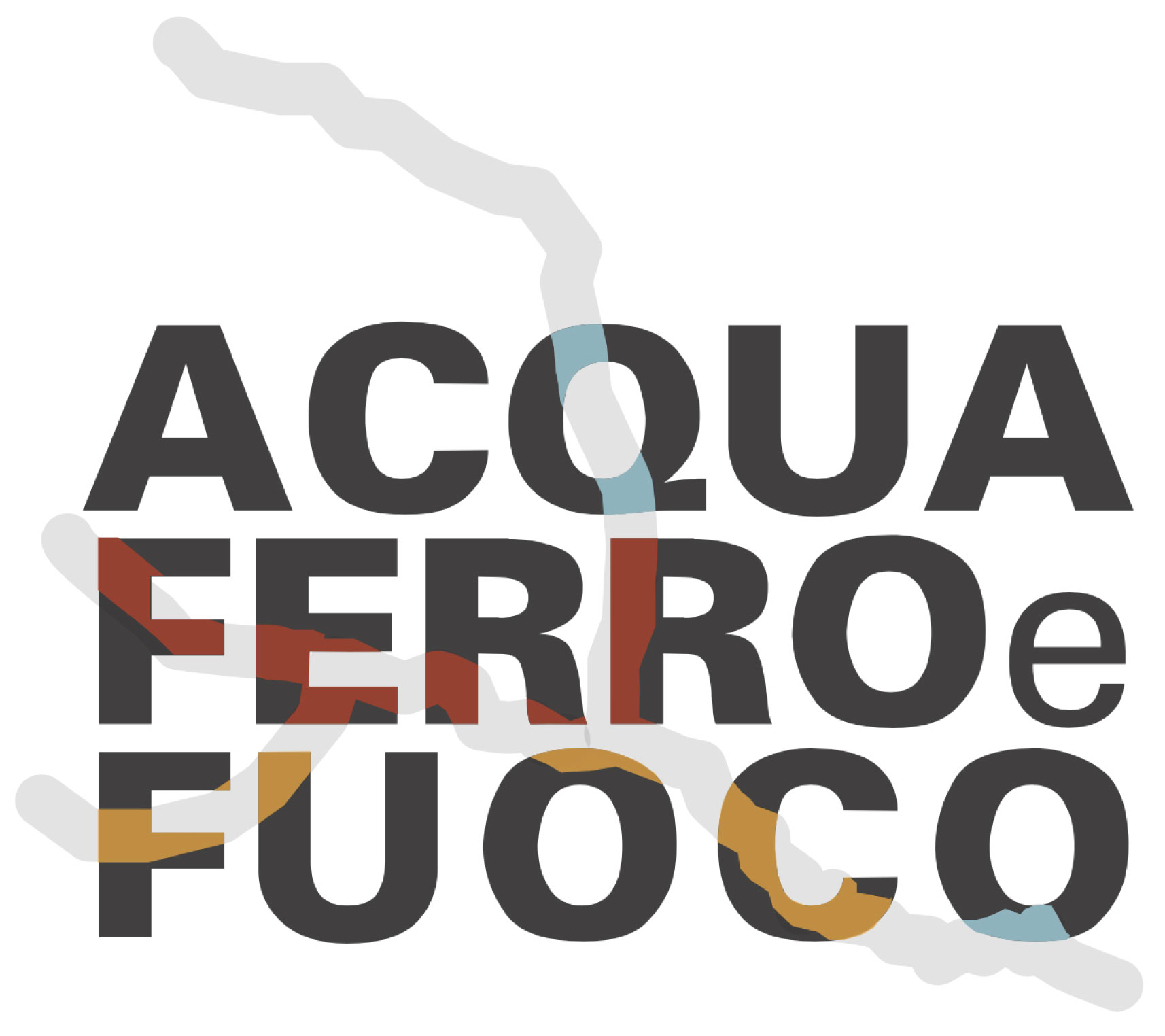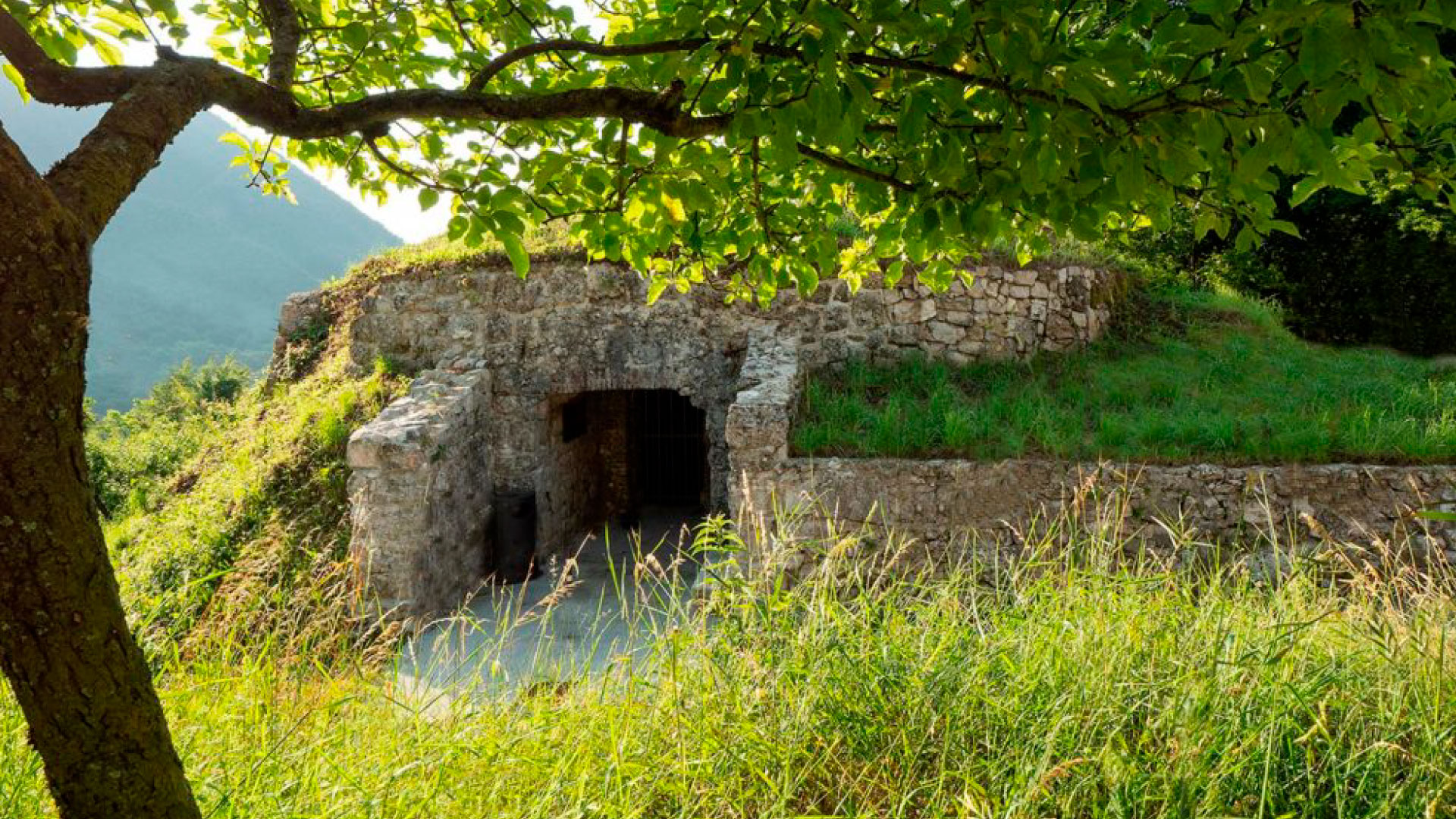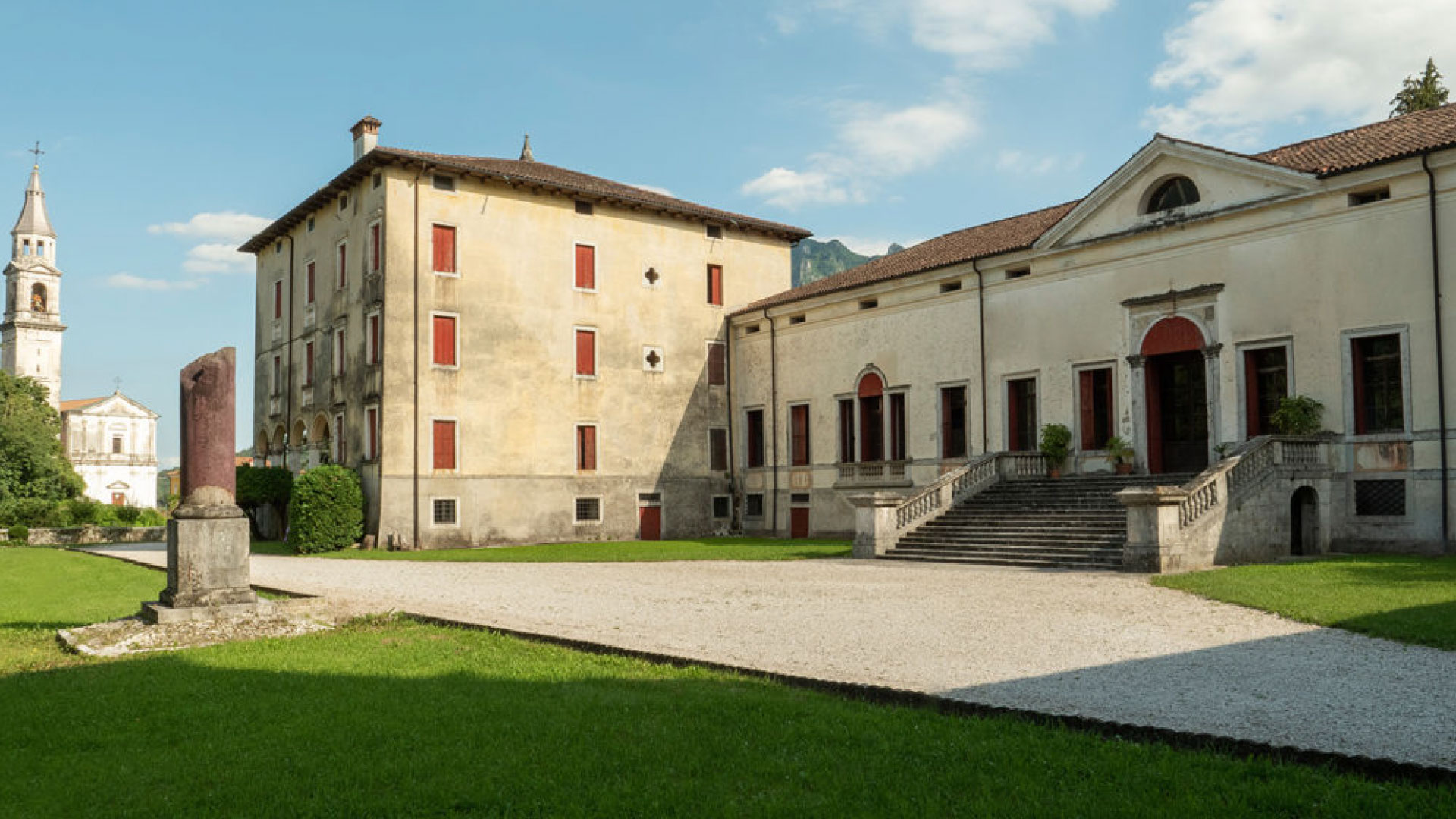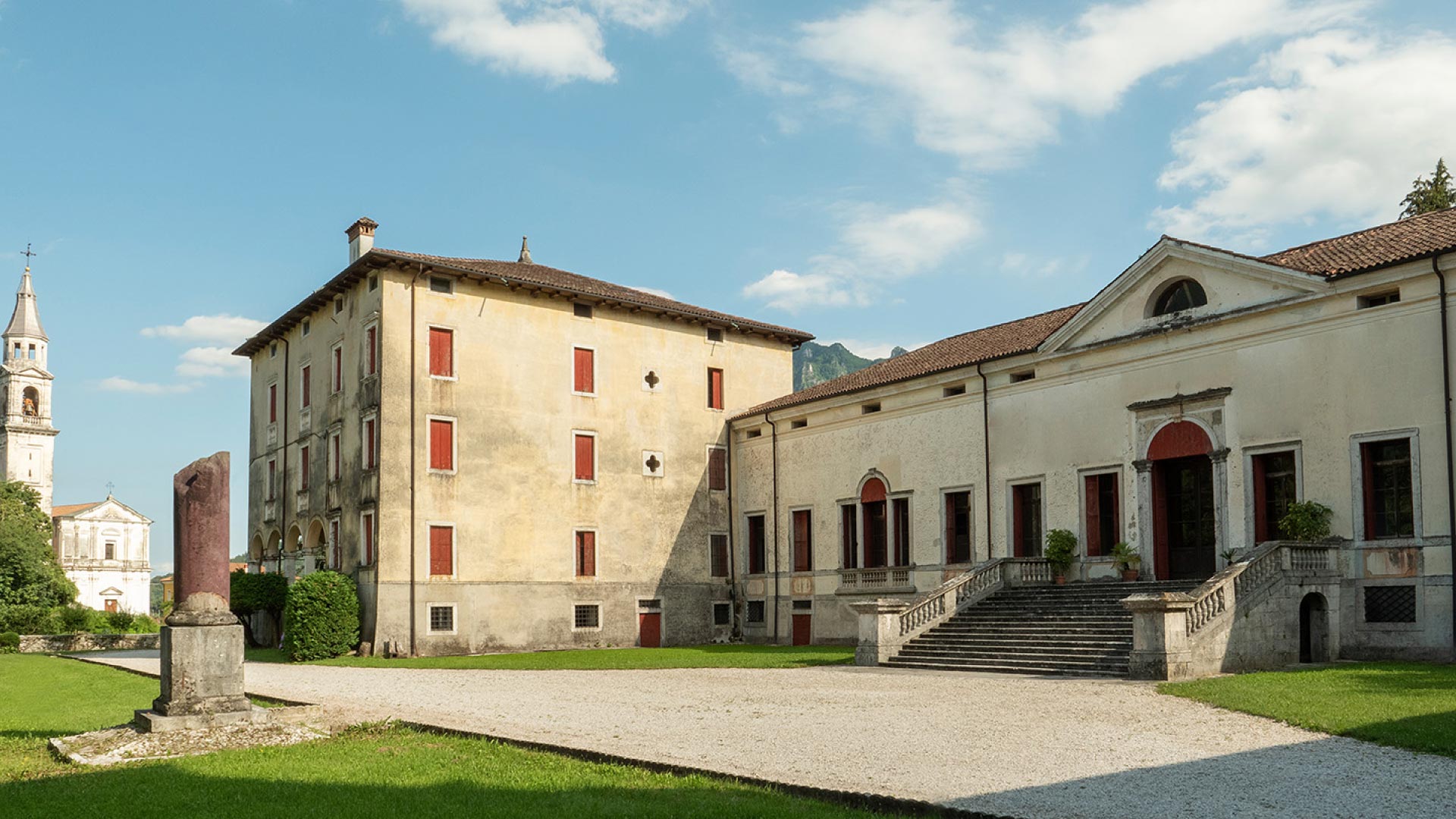The villa was owned by the Velos, a powerful Nordic family that had been appointed to rule the fiefdom in the Middle Ages. A watercolour map dated 1673 provides testimony that the villa was there at that time, when it was used as a Sunday residence by Count Scipione Vello from the Vicenza branch in Contrà Carpagnon. The villa underwent major renovation work in 1752 and the finished product is still on view today. It perches on the promontory overlooking the town of Velo d’Astico and lies opposite the hill upon which stands the 18th-century parish church of Santi Martino e Giorgio. Antonio Fogazzaro was very familiar with the villa, calling it “Villa Cortis” in his novel “Daniele Cortis”. The main buildings and spaces are the early 18th-century Cappella del Redentore (Chapel of the Redeemer), with its square plan, rounded vertices, entrance door with its small but characteristic curvilinear front, and interesting baroque altar inside. Above the door and its stone surround is a guardhouse, whose entrance sits at the top of a ladder that climbs from a secret garden directly to the north. The solid-looking palazzo with hipped roof was built by flattening the hill opposite the existing three-storey building. The 43-metre long 18th-century wing, with the palazzo on one side and a country-style portico on the other, has a large, solemn staircase in the middle and houses the reception rooms, with the central one entirely frescoed with scenes from the Napoleonic era. A 3,400 square metre garden covers the area south of the palazzo and is surrounded by sturdy walls; it features a perfectly oval miniature pond with a statue of Neptune in the centre, spouting a jet of water upwards. There is also a rustic part, with a tall dovecote tower, a large portico, a groundsman’s house, a park (an 83,000 square metre forest of beeches, pines, firs, larches, hornbeams, chestnuts and alders) and a lake, known as “the fishpond”. Particularly noteworthy is a broken marble Egyptian column which symbolises “blue passion” in “Daniele Cortis”. Fogazzaro retained that it was a feeling to be experienced in a transcendental, ideal form, one with no physical or earthly domain.
“You ascend over there to the quiet open bosom of the hill, and then among the trees to a grassy plain where an ancient marble column, brought from the Baths of Caracalla to this other solitary place, has two hands shaking in relief on its base and the following words: HYEME ET AESTATE / ET PROPE ET PROCUL / USQUE DUM VIVAM ET ULTRA ”(In winter and in summer / from near and far / as long as I live and beyond).
Source: “InCanti fogazzariani”, Giovanni Matteo Filosofo, Editrice Veneta, Vicenza, 2011.













